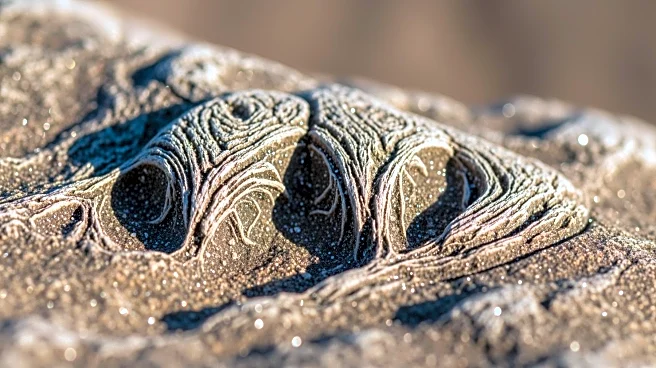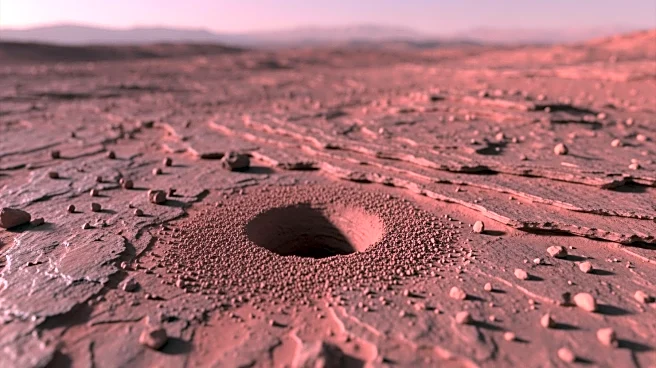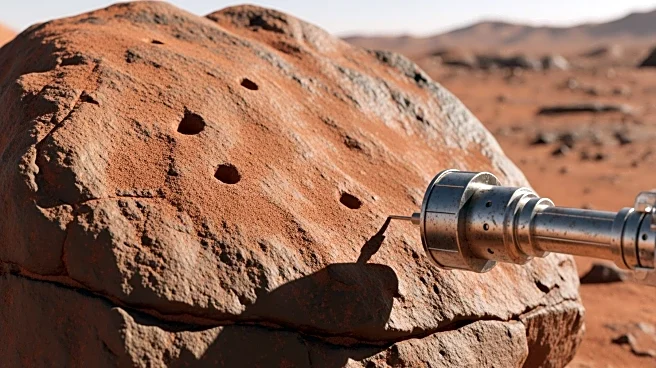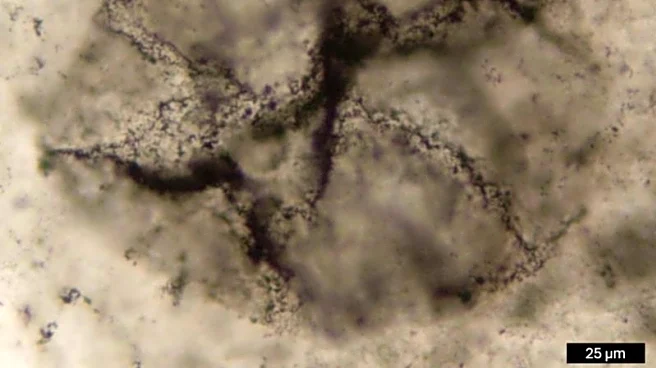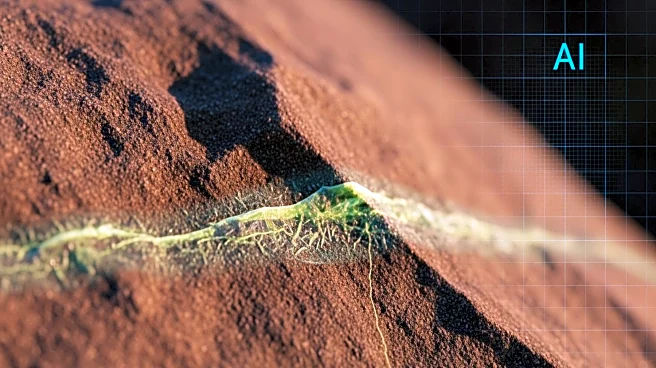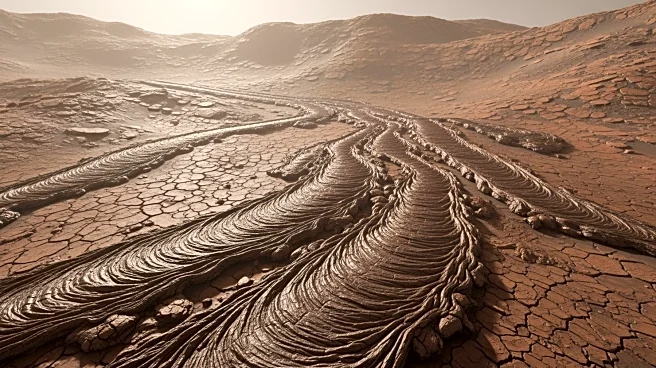What's Happening?
A team of researchers led by the Carnegie Institution for Science has identified chemical signs of ancient life in rocks that are over 3.3 billion years old. This discovery was made possible by combining
advanced chemical techniques with artificial intelligence to detect faint molecular patterns left by ancient organisms. The study, published in the Proceedings of the National Academy of Sciences, also suggests that oxygen-producing photosynthesis began nearly a billion years earlier than previously thought. The research involved analyzing well-preserved seaweed fossils from Canada's Yukon Territory, which are among the earliest known seaweeds, dating back roughly one billion years. These findings offer new insights into Earth's earliest biosphere and could have implications for exploring life beyond Earth.
Why It's Important?
The discovery of chemical traces of ancient life in such old rocks significantly extends the timeline for studying Earth's early biosphere. This research demonstrates that ancient life left behind more signals than previously suspected, providing a new method to explore the deep past. The ability to detect biosignatures in rocks older than 1.7 billion years doubles the period during which scientists can study chemical evidence of life. This breakthrough could also guide the search for life on other planets, as the techniques used could be applied to samples from Mars or other planetary bodies. The findings highlight the potential of machine learning in interpreting complex geological data, offering a new way to understand the evolution of life on Earth.
What's Next?
The research team plans to continue refining their methods to further explore ancient biosignatures. The application of these techniques to planetary exploration could lead to new discoveries about the potential for life beyond Earth. As scientists continue to analyze more samples, they may uncover additional insights into the evolution of early life and the conditions that supported it. The study's implications for astrobiology could influence future missions to Mars and other celestial bodies, where similar techniques might be used to detect signs of past life.
Beyond the Headlines
The use of artificial intelligence in geological research represents a significant advancement in the field, allowing scientists to uncover previously invisible biological clues. This approach not only enhances our understanding of Earth's history but also opens new avenues for exploring extraterrestrial life. The ethical and cultural implications of discovering life beyond Earth could be profound, potentially reshaping our understanding of humanity's place in the universe. As researchers continue to push the boundaries of technology and science, the integration of AI in geological studies may lead to further breakthroughs in understanding the complex history of life on Earth.
